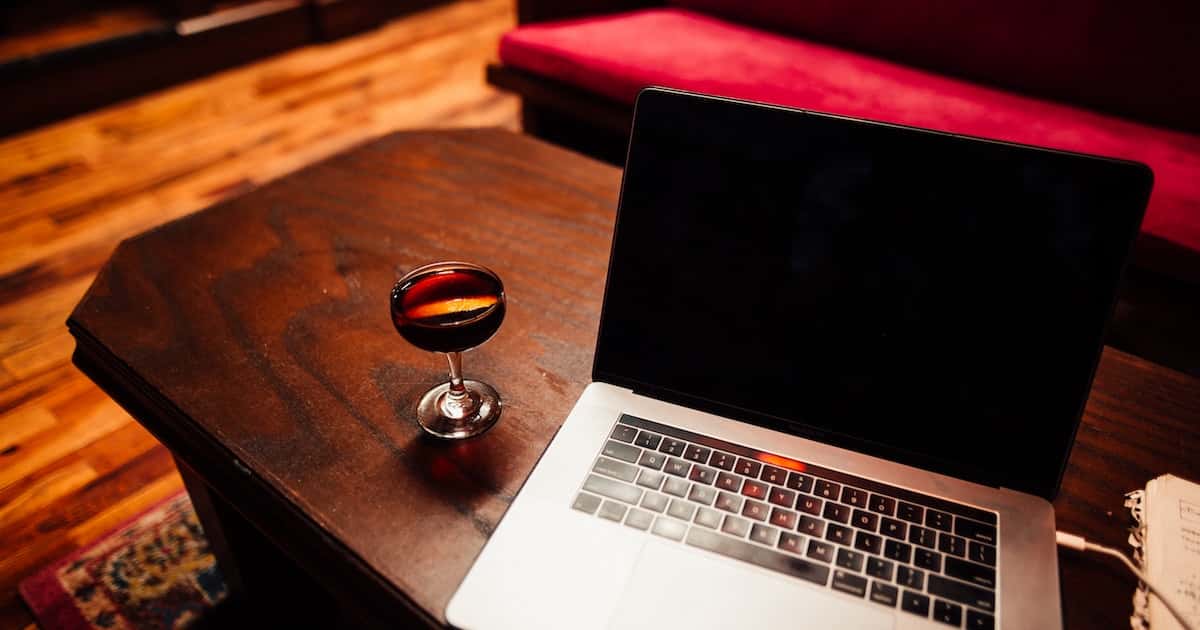- All Events
- Wine Tours
- Wineries
- Blog
- About

When we think about wine, we most likely imagine warm summer days and rolling vine-covered hills. But here in the twenty-first century, wine is just as much about microchips and satellite networks as grapes and growing seasons.
The wine industry, like many others, is facing numerous challenges, including sustainability in the face of a changing climate and growing demand for food traceability. While contrary to the ancient craft of winemaking, digitalization improves efficiency, sustainability, and productivity.
Let’s face it, wine technology has infested the vineyard, and it will shape the future of wine.
It seems like science fiction, but it has now become fact. Robots are being used in vineyards for fertilization and grape harvesting. Robotic systems are also part of inventory control, wine storage, and movement.
The latest development from Naio Technologies is an adjustable, self-contained machine that weeds crops and tends to the soil. Electric-based, Ted uses GPS to maintain position. Manufactured in France, Ted’s purpose is to reduce the need for growers to put potentially harmful herbicides into the soil.
Intelligent sensors in the vineyard, warehouse, and on the bottle provide valuable data about each stage of the wine from grape to consumer.
Consumers will have access to vineyard information, farming techniques, and every stage of the winemaking process, including any additives. It is even possible to tie in wine reviews.
These so-called, Intelligent Wine Bottles will also allow vintners to track a bottle’s location, storage, temperature, humidity, buyer, and even the current price. This can be helpful with wine distribution and provenance — reducing wine fraud.
Using Artificial Intelligence can collate wine reviews and combine information about taste markers. This will, in theory, create a more comprehensive analysis of a particular wine. It will also provide insight into taste trends. Artificial Intelligence can also be used to monitor and manage crops and oversee the quality of the winemaking process.
Currently used to monitor the health of more expansive vineyards, GPS and satellite imagery also has wide applications and benefits for smaller wineries.
The Green Brain system, an Australian product, uses satellite imagery and AI to monitor the health of grapes from planting to harvest. Smart monitoring systems support sustainability, providing insights that can be addressed in real-time, minimizing chemical intervention.
Other systems, such as that used by the Spanish Bodegas Ayuso, use automated drones rather than satellites,
Using drones to collect information, wineries can quickly gather data on fruit ripeness, water shortage, irrigation concerns, and disease in the vineyard. This allows for more informed decisions and quicker responses to adverse conditions.
One of the most practical uses of technology in agriculture is using LIDAR, laser-assisted remote imaging, to map a vineyard. This 3D mapping technology provides a better understanding of vineyards’ landscape, altitude, and slope. It also gives a more thorough understanding of water sources and past uses of the land.
Wine labels are the next marketing frontier. Marketers thoroughly understand the value of building value between brands and consumers.
Electronic wine labels that provide wine information and insight into the wine’s history are a reality.
Rabble, a Californian wine producer, has animated label designs highlighting their medieval-style illustrations. A new app by 19 Crimes making, Living Wine Labels, shows “confessions” stories of featured bottles. And Sparflex packaging has developed Augmented Reality Wine Foils that launch animated stories straight from the label.
Marketers realize that Smart Packaging can build loyalty and a solid customer base that may otherwise shy away from the wine industry.
E-Certificates are a logical extension of bottle sensors. The import and export of wine require a copious amount of paperwork worldwide. E-Certificates can potentially eliminate paper–allowing these documents to be accessed digitally. E Certificates may be a win-win for the industry protecting the environment and providing significant savings.
At first blush, wine and blockchain technology may not seem like an easy fit. But NFT technology can be a game changer, especially when used as a certificate of authenticity or provenance. This is the idea behind BitWine, a 1,000-bottle digital wine collection designed by sommelier Lauren Vaile. If you prefer something more substantial for your investment, look to the WiV platform. WiV’s NFTs are all linked to bottles of actual wine that are securely stored. An owner can either drink the wine, save it, or sell it by passing on the NFT.
Technology has helped us plan, plant, grow, harvest, bottle, and sell wine. But what about storage?
Related: Wine Books Dying to Find a Home on Your Shelves
Smart warehouses and wine cellars are at the top of the list for assistive technologies. Combining robotics and artificial intelligence, wineries improve efficiency and reduce costs.
WineCab is an AI-driven wine wall and Robotic Sommelier. If you have ever eaten at Areole, at the Mandalay Bay in Las Vegas, Nevada, you have probably been mesmerized by a wine wall.
In a wine wall, artificial intelligence is used to glean your perfect wine before transporting the bottle from the wall to its dispenser via a robot arm.
There are also more affordable options, such as the LG Signature Wine Fridge paired with the wine app Preferabli. This platform works with wine, beer, and spirits. It remembers wine preferences and helps with meal pairings.
While it is true that computers and their minions have invaded wine-making, these new technologies can be considered supercharged tools intended to assist vintners in the age-old artistic craft of wine-making.